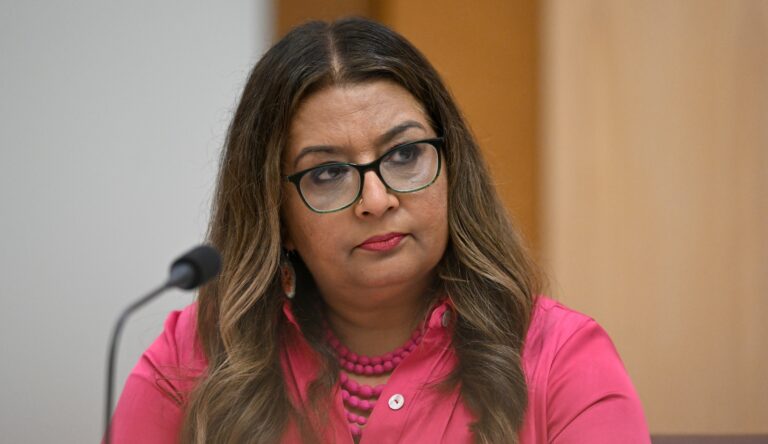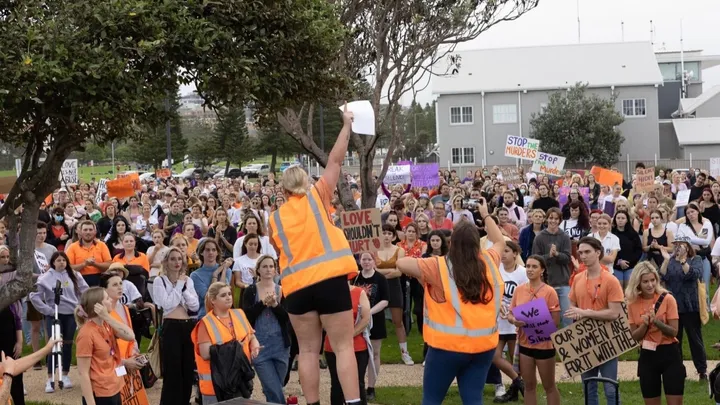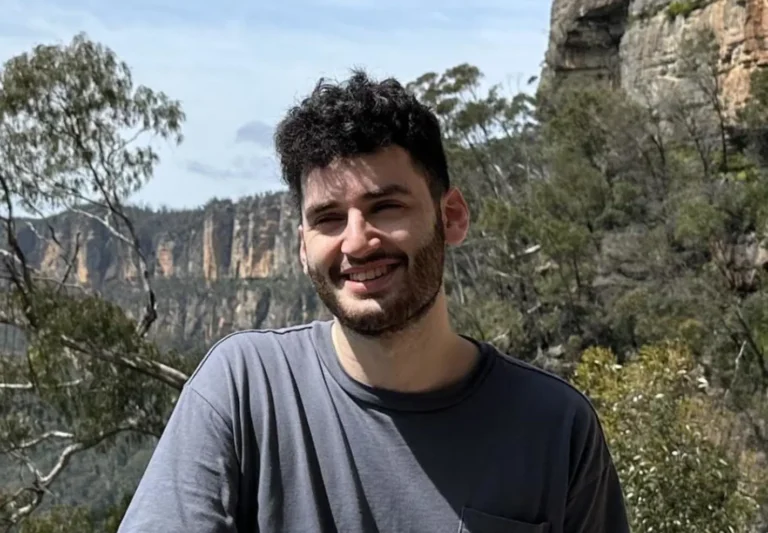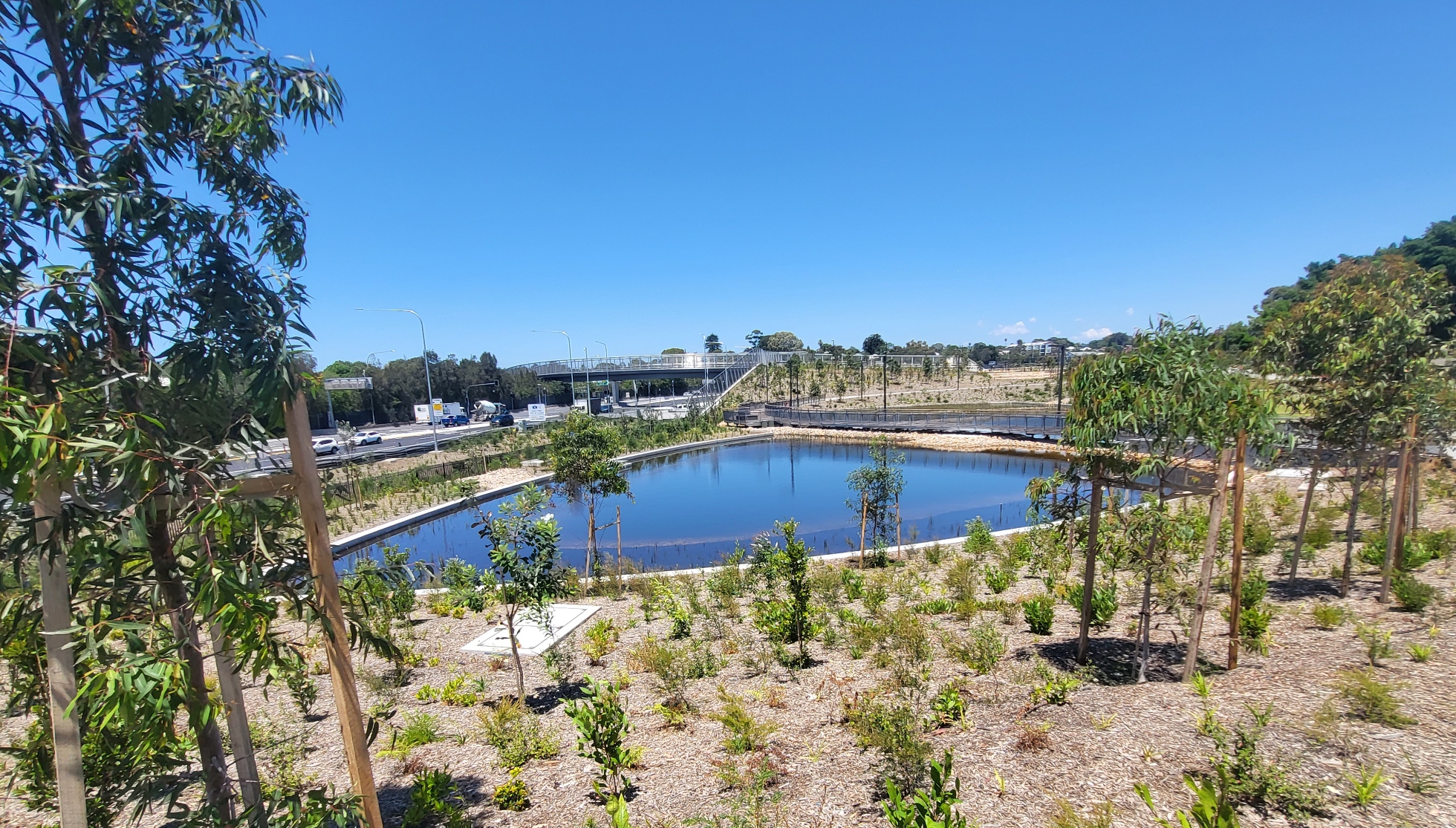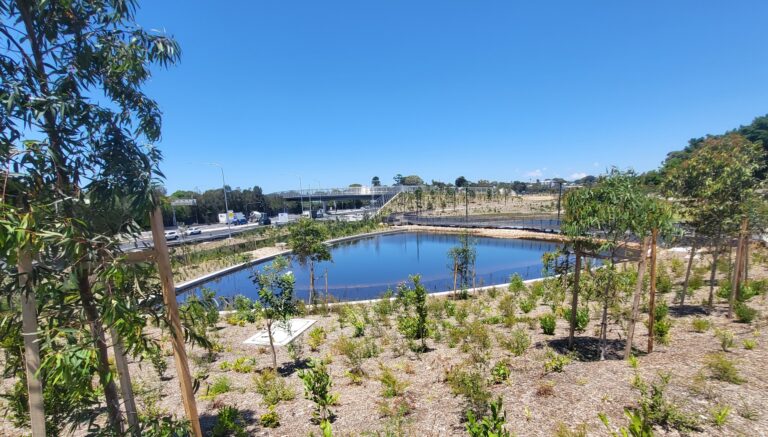

Image: Forward to oblivion: a driverless train driver's view of the Metro line. Photo: Alec Smart
By Alec Smart
On May 30, Sydney Metro announced that a multi-million-dollar contract was awarded to a construction consortium to continue replacing and rerouting the T3 Bankstown Line, which involves new tracks, stations and driverless trains.
However, opponents say an upgrade is unnecessary and that the purpose of the Metro line is to encourage more property development, including multiple high-rise apartment blocks, around the new stations. They believe it will also expand privatisation of public transport, emphasising that replacing Sydney’s double-decker trains with single-deckers will increase passenger congestion.
History: In 2010, the Labor-run NSW Government investigated funding an extension of the passenger rail system from Epping to Hills District. However, they lost the 2011 state election and the new Liberal Party Transport Minister, Gladys Berejiklian – now Premier of NSW – altered the plan. She instead opted for a privatised cross-city rail service, utilising single-deck driverless trains. Independent of the existing network of driver-operated double decker trains, it was rebranded as the Sydney Metro.
The fully-automated Metro rail network includes two sections: Sydney Metro Northwest, consisting of 13 stations and functional since May 26, and Sydney Metro City and South West, a further 18 stations, still under construction.
When complete in 2024, it will deliver 31 new or modified stations, with the line running from the Hills District in Sydney’s north-western region, southwards through Chatswood and beneath Sydney Harbour, then, via new underground stations in the CBD, on to Bankstown in the south west.
A third line, Sydney Metro West, consisting of a connecting link between the CBD and Westmead near Parramatta, was announced in November 2016 and approved by the NSW Government in June 2018. Consisting of up to 10 stations, which may include Pyrmont, Kings Bay, North Burwood or Five Dock, and Camellia or Rydalmere, Concord West or North Strathfield, depending on the route taken, construction is expected to start in 2022.
Rail operator bans LGBT adverts
The completed stage one, the $7 billion Metro Northwest, is the city’s first privately-operated suburban line, managed by Hong Kong’s MTR Corporation. MTR – ‘Mass Transit Railway’ – is a major public transport network company serving Hong Kong and expanding into Lantau Island and the southern tip of mainland China.
MTR’s Chinese rail network is one of the most profitable metro systems in the world with a ‘farebox recovery ratio’ of 187 percent – the fraction of operating expenses covered by revenue from passenger fares.
MTR has faced criticism and fines in Hong Kong over its felling of trees in environmentally-sensitive areas during expansion works. However, the biggest controversy came this year, concerning its attitude to the Gay and Lesbian community.
The South China Morning Post reported on May 20 that MTR Corporation refused to display an airline company advertisement featuring two barefoot men in suits holding hands, with the words ‘Move Beyond Labels’.
According to the Post, “The advert, which showed two men strolling hand in hand along a beach, was part of a broader Cathay Pacific Airways rebranding campaign called Move Beyond and was intended to highlight the airline’s attitude to diversity.”
Cathay Pacific, based in Hong Kong, is the world’s largest international cargo airline and one of the world’s most popular passenger airlines, carrying millions of commuters every year.
A Cathay Pacific spokesperson declined to comment on the advert not being shown by MTR but told the Post, “We embrace diversity and inclusion. We are very diverse and our customers are too.”
An MTR spokeswoman told the Post that advertising bookings for the majority of its network were handled by French agency JCDecaux, which, in turn, pointed to clauses in the contract stipulated by MTR. These stated that adverts were unacceptable if visual content was “immoral; or which offend the generally accepted standards of public decency or the social or cultural standards of the society,” and “in any way cause discomfort, fear, distress, embarrassment or distaste to the public,” and furthermore, could be blocked if they “incite social controversy, whether arising immediately or occurring anytime afterwards”.
Premier Gladys Berejiklian, who said she was ‘absolutely awestruck’ by Sydney’s new MTR-run railway, said, “I’m hoping .. when people use the service … they will be able to imagine what the future of Sydney will look like with the Metro expanding to other parts of the system.”
Driverless trains surge ahead
Work on stage two, the Sydney Metro City and South West rail line, surged ahead at the end of May 2019 when a 450-tonne crane lifted into place columns and bridge supports of the new pedestrian concourse at Sydenham Station.
Simultaneously, On May 26, rail services at the other end of the new network, the Metro Northwest Line in north-western Sydney, began operating driverless train services along 13 stations between Chatswood, on the upper North Shore, and Tallawong Station in Rouse Hill. An existing rail line between Chatswood and Epping was converted to carry the single-deck Metro trains.
Then on May 30, Sydney Metro announced: “A $26 million contract has been awarded to help deliver the Metro upgrade of the T3 Bankstown Line between Sydenham and Bankstown. Metron T2M, a joint venture between Arcadis Australia Pacific Pty Ltd and Mott MacDonald Australia Pty Ltd, will deliver design services for the stations and the railway corridor between Marrickville and Punchbowl.”
According to Sydney Metro, “The Sydney Metro City & Southwest Project will upgrade and convert all 11 stations between Sydenham and Bankstown to metro standards… with all stations to be fully accessible with lifts and level access between platforms and trains.
“Sydney Metro City & Southwest will operate fully segregated from the existing Sydney Trains railway between Sydenham and Bankstown. The T3 Line west beyond Bankstown will continue to be operated by Sydney Trains, serving stations between Liverpool, Lidcombe and Bankstown
This upgrade will address one of Sydney’s biggest rail bottlenecks, providing more reliable journeys for customers all across Sydney, as well as increasing accessibility at all 11 stations.”
More developments for developers
Opponents, including Save T3 Bankstown Line Campaign, Sydenham-Bankstown Alliance and Restore Inner West Line, claim that the southern section of Sydney Metro is unnecessary along the proposed route currently under construction.
According to the Sydenham-Bankstown Alliance, “The Bankstown line has one of the lowest rates of over-crowding of any Sydney line, meaning there is no need for a rapid transit Metro operation. Official statistics from 2015 [published by Transport for NSW] show that out of the 11 suburban lines, the Bankstown line only ranks seventh for average load factor during the AM peak. The Illawarra, Northern, Inner-West and Western lines have far worse over-crowding.
“The Metro should have instead initially run to Parramatta, given it is servicing a major stronger growth corridor which runs to Sydney’s second CBD…
“Once converted to a Metro.. a total of seven stations are being removed from direct access, St Peters – Erskineville – Redfern – Museum – St James – Circular Quay – Town Hall.
“The exact intentions of the NSW Government (and indeed the private sector) for the Bankstown line are shrouded in secrecy. This raises concerns that urban renewal proposed around the Bankstown line is simply being used to increase the return to government from a partnership with a private operator.
“This suspicion is heightened by the fact that MTR’s primary business model is to be a property developer. In 2015, one planning expert stated that MTR was creating ‘fortress’ communities with its high-rise towers in Hong Kong over transport hubs.
“We agree with Ecotransit’s conclusion that ‘based on the information that has been presented to the public, one can reasonably conclude that the Sydney Metro, including the City & Southwest section, is not really about providing improved public transport. It is about providing development opportunities to developers, including MTR Corporation, and turning large tracts of Sydney into MTR’s version of Hong Kong.’”
